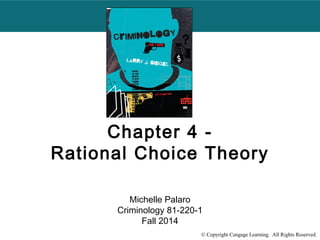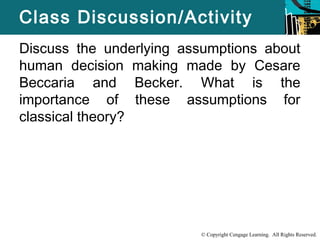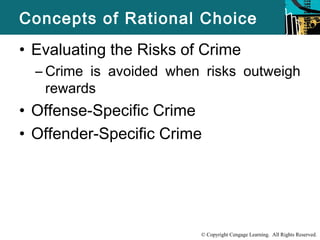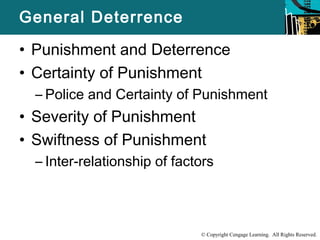This document discusses rational choice theory and its key concepts. It covers:
- The origins of rational choice theory in the work of Cesare Beccaria and James Q. Wilson, who viewed crime as the result of rational thought processes.
- How rational choice theory sees criminal decisions as being structured based on evaluating risks/rewards, economic needs/opportunities, and targeting vulnerable places and people.
- Criticisms of rational choice theory argue that not all crimes, like drug use or violence, are truly rational decisions.
- Situational crime prevention aims to control crime by increasing guarding potential targets, controlling means to commit crimes, and monitoring potential offenders. This includes techniques like defensible space




















